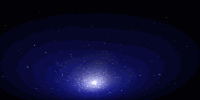
There are various theories about world coming to an end 2012 . .A scientist named Zecharia Sitchin states that Nibiru has been involved in a planetary collision sometime in history,destroying a planet known as Tiamat located between Mars and Jupiter and within the solar system. The following event was belived to have created Earh,Moon and the astroid belt. It is strongly belived that Nibiru is expected to collide with earth again in 2012.
According to the Sumerian documents, the meaning of Nibiru means “planet of the crossing”, hence the popular nickname – Planet X. Planet X is a term generally used by scientists and researchers to distinguish an identified planet.
interpretation of this transition postulates that this date marks the start of time in which Earth and its inhabitants may undergo a positive physical or spiritual transformation, and that 2012 may mark the beginning of a new era. Others suggest that the 2012 date marks the end of the world or a similar catastrophe. Scenarios suggested for the end of the world include the arrival of the next solar maximum, or Earth's collision with a black hole or a passing asteroid or planet called "Nibiru".
Scholars from various disciplines have dismissed the idea of such cataclysmic events occurring in 2012. Professional Mayanist scholars state that predictions of impending doom are not found in any of the extant classic Maya accounts, and that the idea that the Long Count calendar "ends" in 2012 misrepresents Maya history and culture. Astronomers and other scientists have rejected the proposed events as pseudoscience, stating that they are contradicted by simple astronomical observations.
Its birth pangs began some 4.6 billion years ago as rock and ice particles swirling around the young sun collided and merged, snowballing to produce ever larger planetary building blocks. In violent pileups, they smashed together to create planets, including the infant Earth. In the turmoil, another body, as big as Mars, struck our planet with the energy of trillions of atomic bombs, enough to melt it all the way through. Most of the impactor was swallowed up in the bottomless magma ocean it created. But the collision also flung a small world's worth of vaporized rock into orbit. Debris quickly gathered itself into a ball, and since then Earth history has unfolded beneath the blank stare of the moon.
After the moon's fiery birth, the Earth's surface cooled. Even so, our planet remained an alien world for the next 700 million years; scientists call this time the Hadean, after the Greek underworld. Rafts of solid rock drifted in the magma like dark ice floes. Gases hissed from the cooling rock—carbon dioxide, nitrogen, water vapor, and others—enveloping the planet in a scalding atmosphere devoid of oxygen. As the temperature dropped further, the steam condensed into rain that tell in primordial monsoons and filled the ocean basins.
These first oceans may have been short-lived. Space rubble left over from the birth of the planets—chunks of rock tens to hundreds of miles across—bombarded Earth throughout the Hadean. The greatest impacts might have boiled the oceans away, forcing the process of cooling and condensation to begin again.
By 3.8 billion years ago the impacts relented. Liquid water could persist. About that time, perhaps in the oceans, lifeless chemical reactions crossed a threshold, producing molecules complex enough to reproduce themselves and evolve toward greater complexity. Life was on a road that led, as early as 3.5 billion years ago, to single-celled, blue-green cyanobacteria that flourished in the sunlit parts of the oceans. By the trillions, these microscopic organisms transformed the planet. They captured the energy of the sun to make food, releasing oxygen as a waste product. Little by little they turned the atmosphere into breathable air, opening the way to the diversity of life that followed.
Those days are long gone, but the processes that turned our planet from a hell to a habitable world are still on view today. Primordial heat left over from the planet's formation still bursts out in volcanic eruptions, spilling lava that exudes gases like the young, cooling Earth. In the planet's harshest environments today, cyanobacteria reign as they have for billions of years. And each time a plant gains a toehold on newly cooled lava, the victory of life over lifeless rock—won so long ago on the young Earth—is affirmed again.
No comments:
Post a Comment